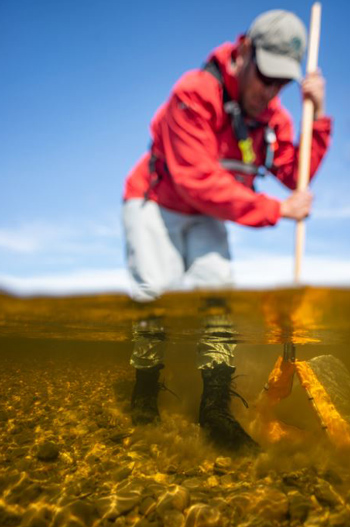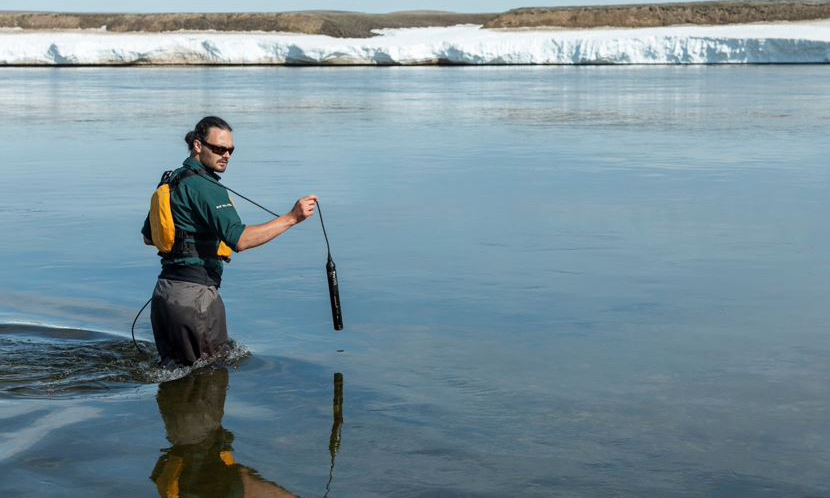
Freshwater
Aulavik National Park
Freshwater health is one of two ecosystem indicators in the park. Parks Canada measures freshwater health in five different ways: nutrients in water, metals in water, abundance of benthic invertebrates (insects that live on the bottom of water bodies, such as streams), diversity of benthic invertebrates, and lake ice cover. Monitoring each measure provides information on the water quality in the Thomsen River, which flows through Aulavik National Park into the Arctic Ocean. Water quality refers to the chemical, physical, biological, and radiological characteristics of water. It is a measure of the health of water in relation to the aquatic species that depend on it.
The quality of the water affects all living beings (fish, bottom feeding bugs, plants) within river systems. Plants and animals need optimal water quality conditions (low metals, low nutrients) to survive in the system. Changes to the water quality can be an indicator of other major changes to the soil, vegetation, and overall landscape of the environment. Water quality also reflects the geology of the region.


Lake ice cover is a measure that is currently being developed. We are interested in measuring change in lake ice break-up dates in the park using satellite imagery.
We monitor each of these measures in the Thomsen River every couple years to help plan and make decisions to keep the park healthy for the present and for the future.
Related links
- Date modified :